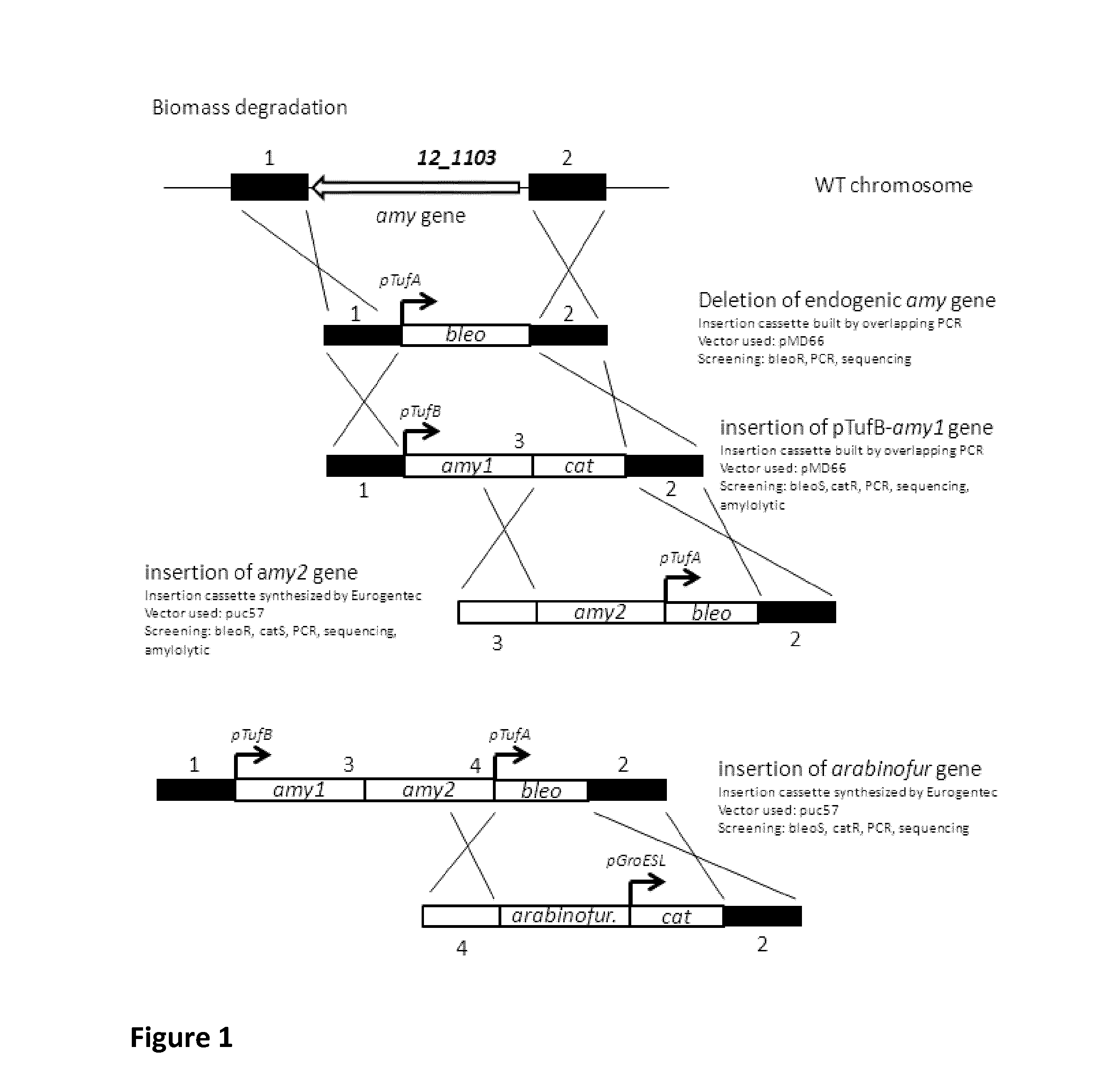Bacteria with reconstructed transcriptional units and the uses thereof
a transcription unit and bacteria technology, applied in the field of recombinant bacteria, can solve the problems of requiring a substantial amount of processing, no natural microorganism, including bacteria or yeasts, meets all of these requirements, and the microorganism still shows drawbacks, so as to improve the activity of the organism and increase the acceptance of the rul
- Summary
- Abstract
- Description
- Claims
- Application Information
AI Technical Summary
Benefits of technology
Problems solved by technology
Method used
Image
Examples
examples
A. Materials and Methods
Bacterial Strains and Growth Conditions:
[0132]Escherichia coli (E. coli) strains SCS110, JM109 or DH5a were used to propagate plasmids. They were cultivated at 37° C. and 200 RPM in Luria-Bertani (LB) Broth (per liter: Tryptone 10 g, Yeast extract 5 g, Sodium chloride 10 g). Solid media was prepared by addition of Agar 1.5%.
[0133]Deinococcus bacteria were cultivated at 45° C. and 200 RPM in PGY. The composition of the PGY medium is the following, per liter: Peptone (10 g), Yeast extract (5 g) and Glucose (1 g). Composition of the solid media is, per liter: Peptone (10 g), Yeast extract (5 g), Glucose (1 g) and Agar (15 g).
[0134]When needed, LB or PGY media were supplemented with appropriate antibiotics:[0135]chloramphenicol, at a final concentration of 3 μg / ml for D. geothermalis, and 30 μg / ml for E. coli [0136]Bleocin, at a final concentration of 6 μg / ml for D. geothermalis, and 10 μg / ml for E. coli [0137]Ampicillin, at a final concentration of 100 μg / ml for...
PUM
| Property | Measurement | Unit |
|---|---|---|
| Composition | aaaaa | aaaaa |
| Degradation properties | aaaaa | aaaaa |
Abstract
Description
Claims
Application Information
 Login to View More
Login to View More - Generate Ideas
- Intellectual Property
- Life Sciences
- Materials
- Tech Scout
- Unparalleled Data Quality
- Higher Quality Content
- 60% Fewer Hallucinations
Browse by: Latest US Patents, China's latest patents, Technical Efficacy Thesaurus, Application Domain, Technology Topic, Popular Technical Reports.
© 2025 PatSnap. All rights reserved.Legal|Privacy policy|Modern Slavery Act Transparency Statement|Sitemap|About US| Contact US: help@patsnap.com



